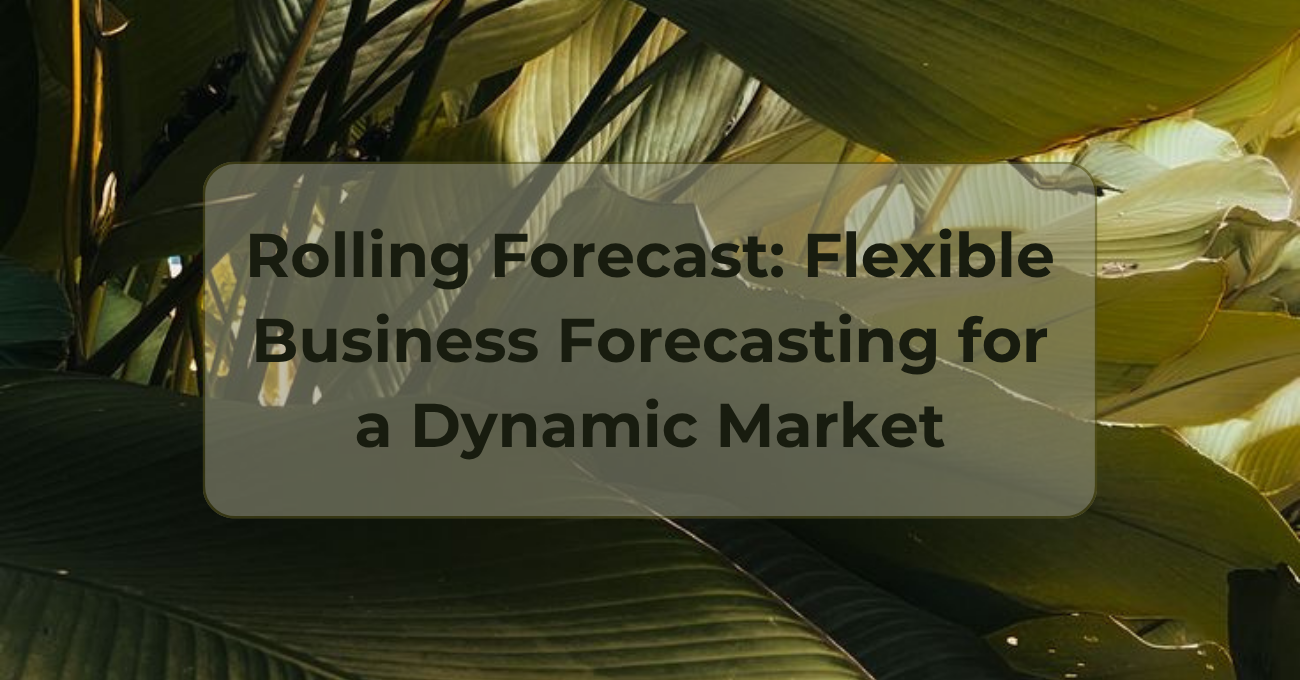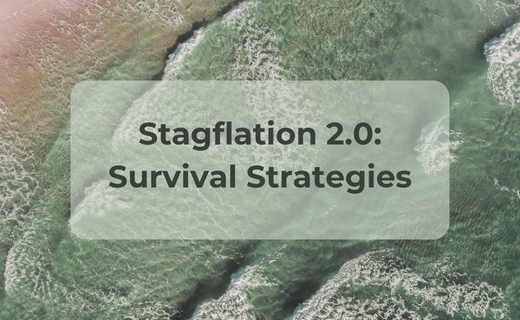Introduction
When Your Map Becomes Outdated Faster Than You Use It
In today’s volatile world, a rolling forecast is becoming an essential business tool. Traditional annual forecasts, once seen as reliable compasses, now resemble outdated maps. They look neat, but they can lead companies in the wrong direction.
Unexpected events, such as pandemics, energy crises, inflation spikes, and rapid technological changes, have made fixed forecasts increasingly risky. As a result, organisations are searching for new ways to remain agile. According to IBM, companies that adopt rolling forecasts improve accuracy by 12%, cut budgeting time in half, and increase profitability by 10%.
This shift shows a clear message. Forecasting should not be treated as a one-time document but as a living organism that adapts and evolves with the market.
1. The Problem with Static Forecasting
Three Main Errors of Fixed Forecasts
Forecasts that do not evolve with new data often fail. Let’s explore the most common mistakes.
Blindness to “Black Swans”
Static planning does not account for sudden shocks. Events such as the COVID-19 pandemic, Brexit, or geopolitical conflicts changed business conditions overnight. However, companies using rigid annual forecasts found themselves unprepared. They could not react fast enough.
The Lagging Effect
Forecasts based on last quarter’s numbers are often outdated. By the time they are published, the market has already moved on. A KPMG survey reveals that 40 % of CFOs believe a rolling forecast would significantly improve planning accuracy. This is because it refreshes the data more frequently.
Misallocation of Resources
Rigid budgets also cause misallocated resources. For example, if demand is underestimated, companies underproduce and lose sales. If demand is overestimated, they overproduce and accumulate costly inventory. The “bullwhip effect” in supply chains illustrates how small shifts in consumer demand can cause significant disruptions upstream.
2. The Solution: Rolling Forecast as a Business Organism
How to Make Your Forecast Breathe with the Market?
The answer lies in flexibility. Businesses must treat forecasting as a living system that constantly adjusts.
Constant Monitoring
Instead of waiting for year-end reviews, companies now update their forecasts on a monthly or weekly basis. This rolling rhythm ensures decisions are based on the latest data. For example, the CFO Indicator survey shows that FP&A teams expect the share of strategic tasks to double — from 11–25% to 25–50% — as a result of rolling forecasts.
Dashboards and Real-Time Data
Technology plays a central role. Dashboards allow leaders to see updates instantly. Since these tools integrate with ERP and CRM systems, they provide a complete picture. Bain research confirms the trend: 35% of companies have implemented or plan to implement generative AI in finance, while 28% of finance teams already use machine learning for quarterly forecasting.
As a result, businesses gain both speed and accuracy.
Scenario Planning
Static planning usually relies on three simple cases: best, base, and worst. However, the modern environment demands more detail. According to the Financial Times, companies are adopting micro-scenarios. These are smaller, targeted stress tests for critical assumptions such as fuel costs or customer demand. This helps leaders prepare for unexpected shifts.
Real-World Case Studies
The benefits of rolling forecasting are not theoretical. Several companies worldwide have already demonstrated success.
AGF (Canada)
This financial services firm abandoned Excel-based planning. It adopted an eight-quarter rolling forecast using Workday Adaptive Planning. As a result, reporting time dropped by several days per month. The annual budget cycle also shrank by a week. Managers gained real-time insights, which improved scenario planning.
SACA (Australia)
The South Australian Cricket Association shifted to an 18-month rolling forecast with quarterly updates. Reporting time fell from 3–4 hours to just minutes. Data now refreshes hourly, and dashboards are available online. This improved both collaboration and executive confidence.
Danone (France)
Danone integrated machine learning into trade promotion forecasting. Accuracy rose to 92%, while customer service levels increased to 98.6%. At the same time, stock-outs and product waste declined by 30 %. This demonstrates how a rolling forecast combined with AI can transform supply chains.
3. The Role of Consulting in Rolling Forecast Adoption
Why Businesses Need Guidance
Transitioning from static to dynamic forecasting is a challenging process. It often requires new tools, new skills, and new mindsets. This is where consulting plays a vital role.
Implementing Technology
Modern FP&A platforms such as Workday, NetSuite, and Lumel enable continuous forecasting. They integrate financial, sales, and operational data into one platform. However, businesses often need external help to set up these systems effectively.
Training Teams
Tools alone are not enough. Staff must learn how to use dashboards, update rolling forecasts, and accurately interpret data. Consultants provide workshops and training programs. As a result, teams gain confidence and skills faster.
Developing Strategy
A consulting partner also helps design the overall forecasting strategy. This includes defining the right horizon for the rolling forecast, deciding how often to update data, and building scenario models.
Consulting Case Example
One case described by FPA Trends shows how a rolling forecast saved a company from collapse. The finance team has noticed a sharp decline in year-to-date sales. They also tracked industry signals from Bloomberg that suggested growing supplier inventories.
Armed with these insights, management revised its forecast from $39.7M to $21.2M. Leadership changes and restructuring followed. As a result, sales not only stabilised but also exceeded the new target. The company gained new strategic options, including the possibility of a profitable sale.
This example highlights how rolling forecasts allow proactive, rather than reactive, decision-making.
4. Drivers, Trends, and Consequences of Rolling Forecast
Why Businesses Are Moving to Dynamic Forecasting
Several forces explain why rolling forecasts are spreading rapidly.
Global Uncertainty
Markets are more unpredictable than ever. Pandemics, wars, inflation, and sanctions regularly shake global supply chains. Static budgets cannot keep up.
Technology Advancements
AI, automation, and cloud platforms have made flexible forecasting both accessible and affordable. This removes barriers that previously kept businesses tied to spreadsheets.
Economic Efficiency
Research by BCG shows substantial benefits. Companies that use rolling forecasts report accelerated sales growth in 59 % of cases. They also report reduced process costs in 56 % of cases.
Consequences of Static Forecasting
- Inefficient allocation of capital and resources.
- Slower reaction times to market changes.
- Declining competitiveness against agile rivals.
- Reduced trust from investors and stakeholders.
Benefits of Rolling Forecast
- Improved accuracy (+12 % according to IBM).
- Shorter budgeting cycles (–50 % time spent).
- Higher profitability (+10 %).
- Stronger investor confidence.
As a result, adopting a rolling forecast is not just a technical upgrade but a strategic necessity.
5. The Future of Forecasting
What Lies Ahead?
Looking forward, several developments will shape how businesses forecast.
Rolling Forecast as Standard
Annual budgets will increasingly be replaced by continuous horizons of 12–24 months. Companies will focus on ongoing updates rather than yearly resets.
AI-Driven Forecasting
AI and machine learning will become central. Bain reports that 35 % of companies are already experimenting with generative AI in finance. Adoption will only accelerate.
Micro-Scenario Planning
Businesses will prepare dozens of scenarios, rather than just three. For example, fuel costs, interest rates, or consumer sentiment may each receive their own stress test.
Decision-Making Under Deep Uncertainty (DMDU)
Frameworks originally designed for climate policy will migrate into corporate strategy. They will help leaders make choices that remain valid under a wide range of futures.
Growing Role of Consultants
External advisors will continue to play a significant role. They will guide companies through technology adoption, culture change, and methodology design.
Our expert guidance in business forecasting will help you identify and mitigate threats and transform external challenges into strategic opportunities. [Contact Us]
Conclusion
The Future Belongs to Flexibility, Not Precision
The business environment now changes faster than most organisations can update their plans. As a result, static forecasts are increasingly useless.
The real value of forecasting is not in predicting the future with perfect precision. Instead, it lies in adapting continuously. A rolling forecast is a tool that allows businesses to stay in sync with the market.
With dashboards, AI, and scenario planning, forecasting becomes a dynamic and living process. It responds to shocks, corrects assumptions, and supports timely decisions.
The future will belong not to companies that cling to outdated maps, but to those that embrace flexible forecasting. Those that adopt rolling forecasts will be ready for turbulence, prepared for uncertainty, and positioned to win.





